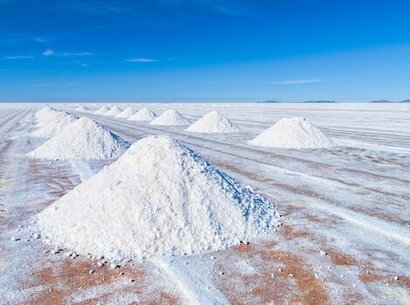
Called direct lithium extraction (DLE), it is expected to unlock a majority of the world’s supply located in salt-lake deposits, or brines. DLE has been iterated for years but has now seen technical breakthroughs making it far less energy- and water-intensive. In the past, commercial production remained hobbled by high costs and decades of slow progress.
Currently, innovative companies are on faster-than-expected timelines, and are on track for commercial demos next year, with Canada’s Summit Nanotech and E3 Lithium expected to begin production in 2025.
“DLE technology can now transform the lithium landscape” said Holly Stower, Cleantech Group’s Senior Associate, Resources & Environment. “It will dramatically raise yields and speed up refining time, while simultaneously using less of land, water, and energy, resulting in lower operational costs.”
On capital costs when adjusted for higher yields, DLE is competitive with current evaporitic ponds. While it would require capital expenditures of up to 80 percent higher due to the cost to set up, it would result in up to 90 percent higher yields. It would also speed up extraction to mere days, as opposed to several months and years for evaporitic ponds.
Global demand for lithium is expected to rise 40 times by 2040, from the 2022 production level of about 600,000 tons. This will make it the fastest growing metal among those needed for the production of electric vehicles and energy storage. The advent of DLE is expected to not only keep costs steady, but also reduce price fluctuations, amid the expected high demand.
Only a few countries mine and refine lithium with primarily Chinese companies dominating the supply chain. As other countries enact plans to electrify transportation and scale EV manufacturing, they are seeking to secure a stable supply of lithium. Agencies like the US DoE are investing in innovators who can compete with China. Of these, Canadians Summit Nanotech and E3 Lithium and French Eramet, are likely to start commercial production in 2025. Public companies including US Livent and South Korea’s POSCO Holdings have set far higher production targets of over 100,000 tons per annum by the end of the decade.
Incumbents and start-ups alike have adopted varied DLE approaches, each offering different trade-offs and efficiencies. Summit Nanotech extracts greater than 90% of available lithium from brines, while Energy X, whose backers include auto giant General Motors, can triple average yields to 90 percent. Some like Go2Lithium claim expertise in extraction from low brine concentrations, while Geolith boasts a modular design that enables installation in mere weeks, besides generating zero waste.
Automakers lock in supplies. Automakers such as GM, Ford, and BMW are among those who have secured lithium supplies via offtake arrangements with Western DLE incumbents. GM, for example, is a backer of Energy X and has a strategic agreement with Livent. Ford, which aims to produce 2 million EVs annually by 2026, has deals with Albemarle, Nemaska Lithium and SQM, while BMW has ties with Livent and Lilac Solutions.
For additional information:

